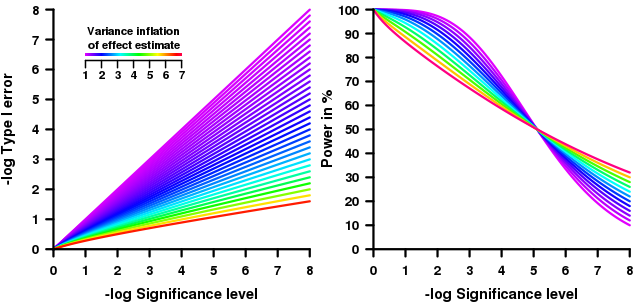
Ignoring dependent observations caused by relatedness by simply fitting a linear model induces inflation of the variance of the effect estimate. This inflation depends on the relatedness structure of the study and the heritability of the phenotype and impacts the type I error as well as the power of the statistical test concerning the effect estimate.
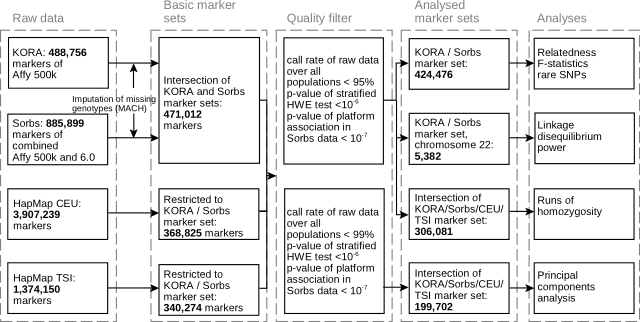
Based on single nucleotide polymorphism (SNP) markers, the putatively isolated population of Sorbs is compared with a German outbred population of the KORA (Kooperative Gesundheitsforschung in der Region Augsburg) study and two HapMap (haplotype map) populations, i.e. CEU (Central Europe) and TSI (Toscans in Italy). Different analysis methods are used for comparison as depicted above.
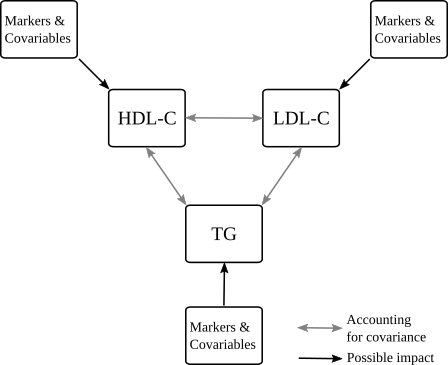
The combined lipid phenotype of high density lipoprotein (HDL-C), low density lipoprotein (LDL-C) and triglyceride (TG) is modelled in order to reveal potentially causal polygenic effects on lipid serum levels in children. Bayesian variable selection is applied to identify most plausible sets of predictors (single nucleotide polymorphism markers and covariables) which have a direct influence on each lipid phenotype.

Ycasd (ycasd captures and scales data) is a simple tool for capturing and scaling data from graphical representations. The tool can be used for retrieving data points from figures of electronically available or scanned publications for which no raw data is provided.
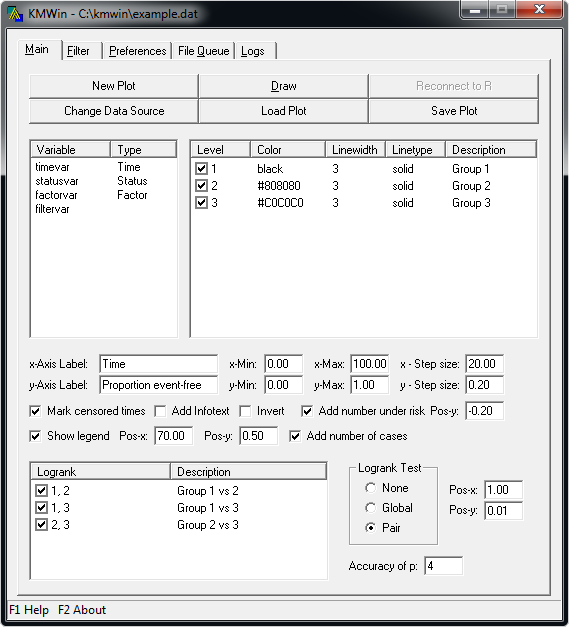
KMWin (Kaplan-Meier for Windows) is a convenient tool for graphical presentation of results from Kaplan-Meier survival time analysis. The programme is based on the statistical software environment R and provides an easy to use graphical interface.
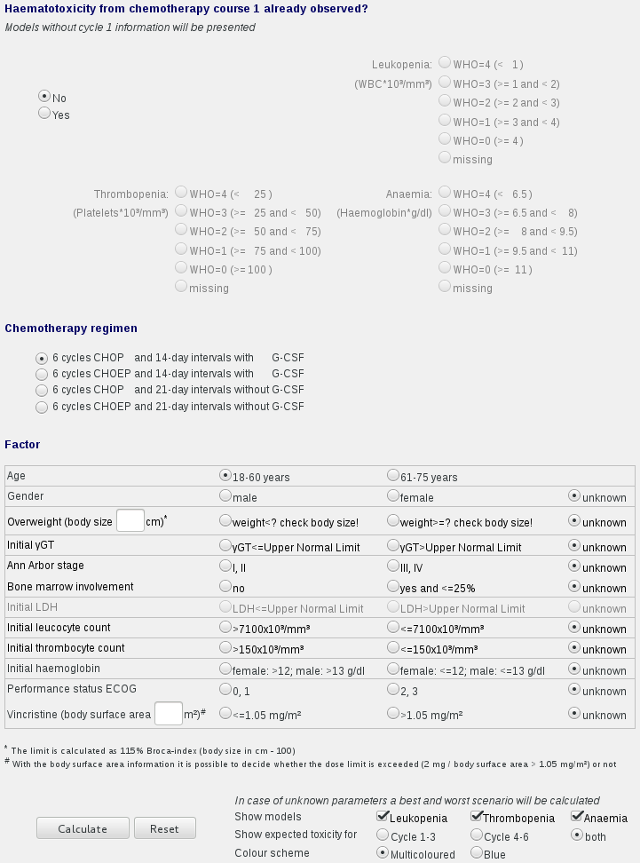
Toxcalculator is a web-based tool predicting haematopoietic toxicity for CHOP-like chemotherapies in patients with aggressive non-Hodgkin's lymphoma. WHO-grades for haematotoxicity are estimated by means of prognostic factors.
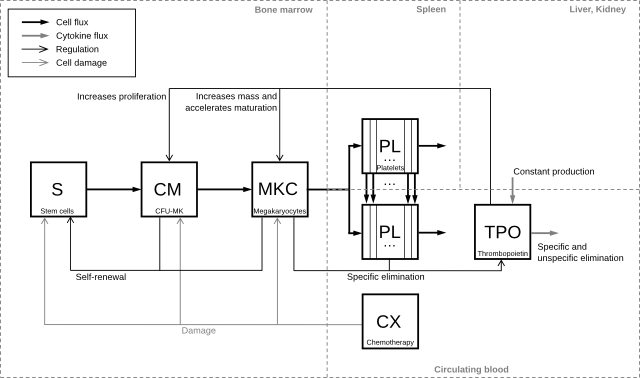
Based on ordinary differential equations, the model predicts the time course of platelets (PL) under chemotherapy and after thrombopheresis. Further, the dynamics of the cytokine thrombopoietin (TPO) as well as stem cells (S), colony forming unit-megakaryocytes (CM) and megakaryocytes (MKC) are modelled.
A list of publications can be found at ORCID.